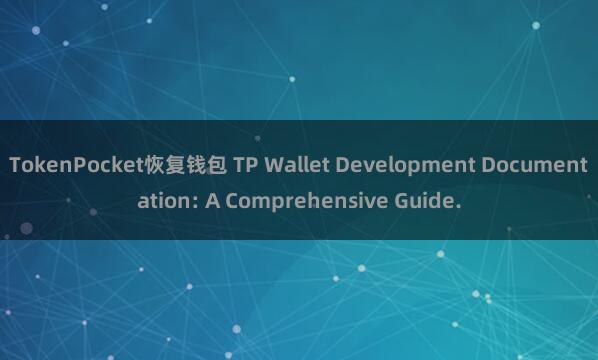TokenPocket备份
你的位置:TP钱包转账教程 > TokenPocket备份 >
TP Wallet Development Documentation: A Comprehensive GuideTokenPocket恢复钱包
Introduction
As technology continues to advance, the demand for digital wallets has been on the rise. These wallets provide a convenient and secure way for users to store their digital assets and make transactions online. In this guide, we will provide detailed documentation for developing a TP (Token Pocket) wallet, one of the most popular digital wallets in the market.
Setting Up the Development Environment
Before we get started with developing the TP wallet, we need to set up our development environment. The TP wallet is built using React Native, so make sure you have Node.js installed on your system. You can install Node.js by visiting the official website and downloading the installer for your operating system.
Next, install the Expo CLI globally by running the following command in your terminal:
```
To download Bither Wallet, simply visit the official website and click on the download button. Once the download is complete, install the wallet on your device and create a new wallet by setting a strong password. It is recommended to use a combination of letters, numbers, and special characters to make your password as secure as possible.
One of the key features that sets Bither Wallet apart from other cold storage wallets is its ease of use. The wallet is user-friendly and intuitive, making it suitable for both experienced traders and newcomers to the world of cryptocurrencies. Users can easily send and receive funds, monitor their balances, and track their transactions without any hassle.
bashnpm install -g expo-cli
```
Once Expo CLI is installed, you can create a new React Native project by running the following command:
```bash
expo init TPWallet
```
This command will create a new React Native project with the necessary boilerplate code for building the TP wallet.
Developing the TP Wallet
Now that we have our development environment set up, let's start developing the TP wallet. The TP wallet consists of several key components, including the wallet dashboard, transaction history, and settings page.
TokenPocket下载1. Wallet Dashboard: The wallet dashboard is the main screen of the TP wallet, where users can view their balance, send and receive digital assets, and access other features of the wallet.
2. Transaction History: The transaction history page displays a list of all the transactions made by the user, including the date, time, amount, and transaction status.
3. Settings Page: The settings page allows users to customize their wallet preferences, such as changing their PIN code, setting up biometric authentication, and managing security settings.
Implementing Security Features
Security is of utmost importance when developing a digital wallet. To ensure the security of the TP wallet, we need to implement various security features, such as encryption, biometric authentication, and PIN code protection.
1. Encryption: All sensitive data stored in the TP wallet, such as private keys and transaction details, should be encrypted using secure cryptographic algorithms to prevent unauthorized access.
2. Biometric Authentication: To enhance the security of the TP wallet, users can enable biometric authentication, such as fingerprint or facial recognition, to log in to their account and authorize transactions.
3. PIN Code Protection: Users can set up a PIN code to protect their wallet from unauthorized access. The PIN code should be required to access the wallet and perform any transactions.
Testing and Deployment
Before deploying the TP wallet to the app stores, it is essential to thoroughly test the wallet to ensure it functions correctly and all security features work as expected. You can use the Expo CLI to run the wallet on a simulator or physical device for testing.
Once testing is complete, you can build the TP wallet for iOS and Android platforms using the Expo CLI. To build the wallet for iOS, run the following command:
```bash
expo build:ios
```
To build the wallet for Android, run the following command:
```bash
expo build:android
```
After the build process is complete, you can submit the TP wallet to the Apple App Store and Google Play Store for review and approval.
Conclusion
In this comprehensive guideTokenPocket恢复钱包, we have covered the development process of the TP wallet, from setting up the development environment to implementing security features and testing the wallet. By following this guide, you can create a secure and user-friendly digital wallet that meets the needs of modern users. Remember to continuously update and improve the TP wallet to ensure its usability and security.
下一篇:TP钱包支持BSC TP钱包与Web3时代集结,打造新一代数字钞票处治器用
- 2025/04/09TokenPocket SDK Explore the Future of Blockchain w
- 2025/04/09TokenPocket恢复钱包 TP Wallet Development Documentatio
- 2025/04/09TokenPocket合约地址 确立基于Solidity的TP钱包智能合约
- 2025/04/09TP钱包智能钱包 TokenPocket缔造指南:钱包缔造者必备文档
- 2025/04/09TP钱包支持BSC TP钱包与Web3时代集结,打造新一代数字钞票处治器用

